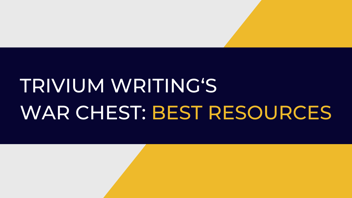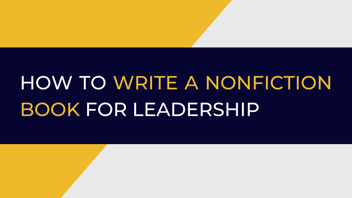How to Write a Book: Your Essential Guide to Crafting a Bestseller
Writing a book is more than an art—it’s a journey of discovery, discipline, and purpose.
Whether you aim to tell a compelling story or share knowledge to educate and inspire, the process is as rewarding as it is challenging. With careful planning, the right tools, and a clear vision, you can bring your ideas to life in a way that resonates with your readers and serves your objectives.
Having written and published books that blend creativity with strategy, I’ve learned the importance of combining structure and freedom in the writing process. From choosing a winning idea to refining your manuscript for publication, this guide covers the essentials to help you succeed.
Building a Solid Foundation for Your Book
Before you dive into writing, you need to set a strong foundation. This includes understanding your audience, defining your objectives, and crafting a clear book idea.
Step 1: Understand Your Audience
Your audience is the backbone of your book's success. Are you writing for young professionals seeking career advice, readers of fast-paced fiction, or business owners navigating growth? Tailoring your content to meet their needs and preferences ensures your book resonates with them.
For instance, while writing my nonfiction books, I kept my ideal readers in mind—driven individuals who have a message to share but who do not have yet the writing foundations to do so. This clarity shaped the tone, format, and even the chapter layout.
Step 2: Define Your Objectives
Ask yourself: Why am I writing this book? Whether your goal is to build credibility, inspire others, or express yourself, defining your objectives will guide every decision.
One of my main objectives when writing is to balance my role as an entrepreneur with my passion for storytelling. My books are as much tools for building my personal brand as they are vehicles for sharing lessons and ideas that have helped me and others grow.
Step 3: Choose Your Core Idea
Your book idea should be specific, unique, and something you’re passionate about. Fiction demands a gripping plot or intriguing characters, while nonfiction thrives on a fresh perspective or valuable insights.
When brainstorming, I often start with a list of topics that excite me. Then, I narrow it down to one that aligns with both my audience's interests and my expertise. For nonfiction, this means asking, What problem am I solving? For fiction, it’s, What journey am I taking readers on?
Drafting and Developing Your Manuscript
Once you’ve laid the groundwork, it’s time to start writing. Here’s where planning meets creativity.
Step 4: Create an Outline
An outline isn’t just a map; it’s your safety net. I use it to stay on track, especially during those inevitable moments when motivation wanes.
For nonfiction, this could be a simple list of chapters with bullet points under each heading. For fiction, I might sketch a timeline or chart character arcs. The key is flexibility—allowing the story or ideas to evolve while keeping the big picture in focus.
Step 5: Commit to a Writing Routine
Consistency is everything. Writing a little each day—or setting aside blocks of time—creates momentum because the more you write, the more you see your progress, and the more you naturally feel like writing. Plus, habits die hard once established.
I’ve found that mornings, before the demands of business take over, are my most productive hours. During those hours, I refuse to check my emails, social media, and text messages. I often even keep my phone in a separate room.
If you struggle with consistency, create a consistent schedule. It ensures progress, even when inspiration is elusive.
Step 6: Embrace the First Draft
This is important. Your first draft is about progress, not perfection. Let the words flow without worrying too much about grammar or style. The goal is to capture your ideas and let your voice take shape.
In my work as a writing coach, consultant, and editor, my clients bring to me manuscripts in va
Refining Your Book
Great writing is rewriting. Once your first draft is done, it’s time to polish your manuscript.
Step 7: Revise with Intent
Editing is not just about fixing typos—it’s about refining your message. I recommend stepping away from your manuscript for a week before revising. This break gives you fresh eyes and a sharper perspective.
Step 8: Seek Feedback
Beta readers and professional editors are invaluable. Choose readers who represent your target audience and can provide honest, constructive criticism.
In my own writing, beta readers have pointed out gaps I’d overlooked, helping me improve clarity and engagement. Their feedback is a gift—accept it with gratitude and an open mind.
Step 9: Design Matters
Don’t underestimate the power of a good cover and title. These are your book's first impression, so invest in professional design. A great cover doesn’t just catch the eye; it tells a story about what’s inside.
When designing for my books, I think about what will resonate with readers and reflect my brand. A strong visual identity can make your book stand out in a crowded market.
Preparing for Publication and Promotion
Whether you self-publish or work with a traditional publisher, a solid launch plan is essential.
Step 10: Build Your Author Platform
An active online presence is key to connecting with readers.
I encourage clients to use social media, newsletters, and their website to share updates and build anticipation for their books. Sharing insights from the writing process—like behind-the-scenes photos or snippets from the manuscript—engages the audience and keeps them invested.
Step 11: Plan Your Launch
Think of your book launch as a campaign. Leverage social media, reach out to bloggers, and consider hosting events. I’ve found that pre-launch buzz is crucial. Encourage early readers to leave reviews—they’re invaluable for building credibility and trust.
Step 12: Keep the Momentum
Publishing your book is a milestone, but it’s not the end. Engage with your readers, gather feedback, and start planning your next project. Every book is part of a larger journey.
Your Book is Just the Beginning
Writing a book is one of the most fulfilling ways to share your ideas, tell your story, or inspire others. The process may challenge you, but it will also teach you about yourself, your craft, and your audience.
Take it step by step, embrace the learning curve, and remember—your book has the potential to impact lives, including your own. So, what are you waiting for? Start writing today.
Article by Leandre Larouche
Leandre Larouche is a writer, coach, and the founder of Trivium Writing.






